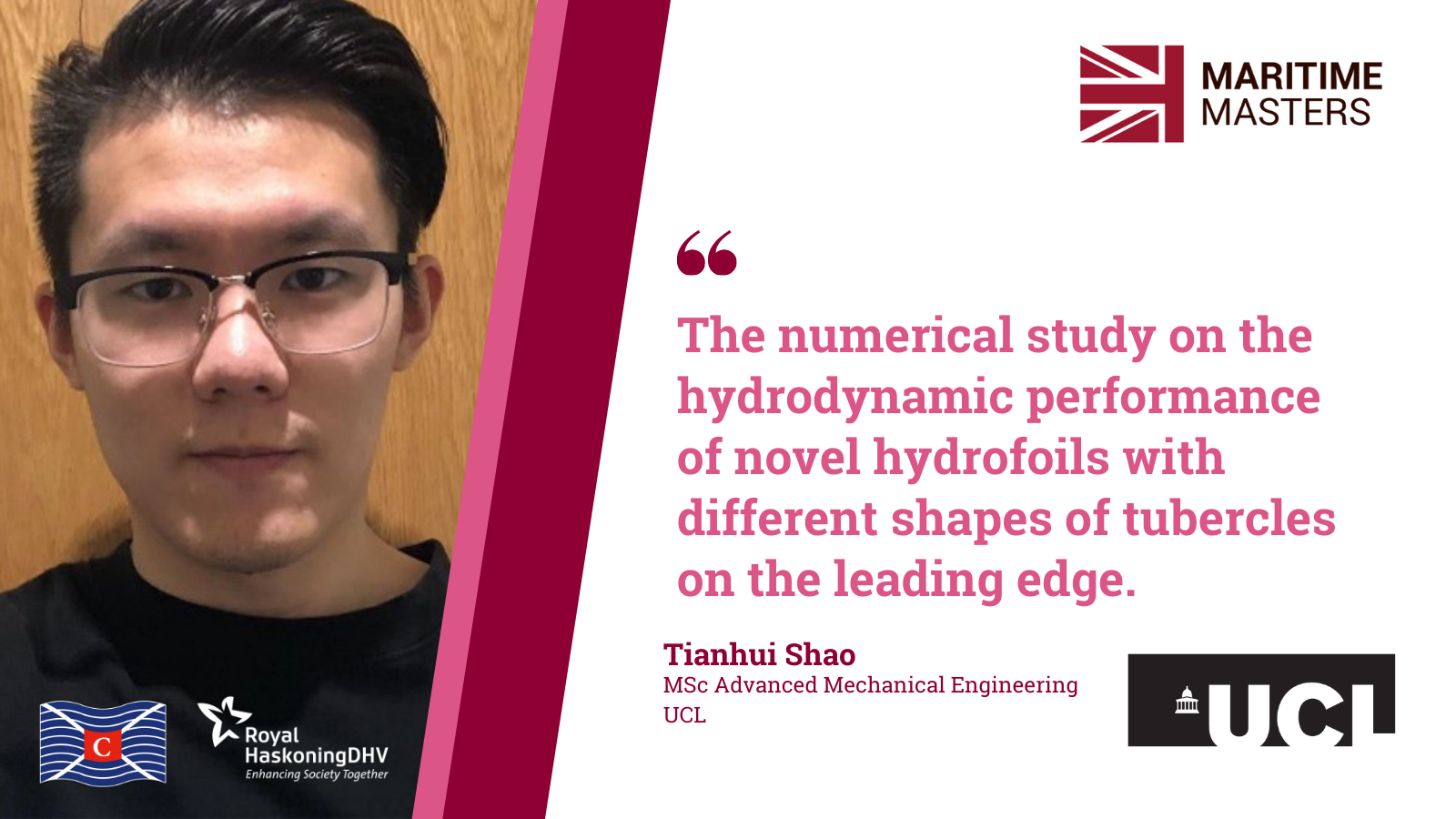Tianhui Shao

Biography:
Tianhui Shao is currently pursuing a MSc in Advanced Mechanical Engineering at University College London. Prior to joining the programme, he completed his bachelor’s degree in Mechanical Engineering at the University of Birmingham. He has worked on a range of various engineering projects, including designing the two stroke engine, the landing gear and the gearbox for a unmanned aerial vehicle (UAV), designing a retractable roof for Maracanã Stadium, designing the body powered prosthetic finger, designing of a cardiovascular pump for laboratory use and studying the hydrodynamic performance of novel hydrofoils with different shapes of tubercles on the leading edge.
Introduction to research:
In the past decades, engineers had drawn more and more inspirations from the nature to solve hydrodynamic problems. This study presents a modern solution to increase the ship power efficiency, which is inspired by the pectoral flippers of the humpback whales. The unique tubercle structures on the leading edge of pectoral flipper are reported have the potential of improving the ambient hydrodynamics for whales. Humpback whales rely heavily on these tubercles to accomplish high-speed motions, sharp turns and loops. Inspired engineers then developed a novel hydrofoil with tubercles on the leading edge. Previous studies and researches had proven that the tubercled hydrofoils had more beneficial hydrodynamic performance than the hydrofoils with smooth leading edge. Researchers also made significant efforts investigate the mechanism behind. In order to further understand the tubercle effects, this study presents a in depth view on the effect of the tubercle shapes on the hydrodynamic performance of the foil.
What is your interest in or the practical applications of this research?
This research helped to develop my computational fluid dynamics (CFD) skill and also helped me to achieve a deep understanding on the fluid mechanics.
It has been proven that compared with conventional hydrofoils, tubercled hydrofoil has more beneficial potentials to diminish drag and save energy consumption for the ship. This helps to provide a guidance on the tubercled hydrofoil designs for future engineering applications.
Why did you choose maritime as your area of study and research?
My programme is closely related to the maritime industry and I have the experience and passion for fluid dynamics. The meaning of this project attracted me at the first place because the novel tubercled foil may be a new generation of not only hydrofoils, but also aerofoils.
